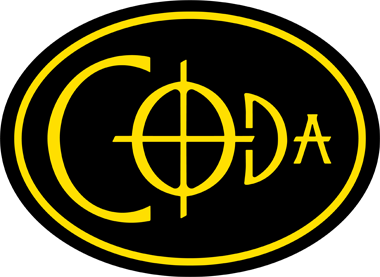Is Coda an easy instrument to learn to play?
Coda has several attributes that make it relatively easy to learn
Here’s a list:
- You just blow into the mouthpiece to sound a note. You don’t need to purse your lips, or “form your embouchure,” or blow in a special way like with a trumpet, saxophone, clarinet, flute, etc. Your lips are relaxed, you blow, and sound comes out. Thus, you get started playing tunes right away.
- Coda’s fingering pattern is linear for the major scale, which is pretty intuitive. Linear fingering means that you play a C scale by successively lifting the four fingers on your right hand (pinky, ring, middle, index) and then three on your left hand (ring, middle, index). In a sense, you walk up the scale in a straight line, first with your right hand and then with your left. This is very similar to the fingering patterns employed by woodwinds such as recorders, clarinets, piccolos, flutes, saxophones, bassoons, etc.
A couple of quick comparisons:
On Coda, you can use the same fingerings to play the upper octave as you do for the lower octave, so the fingering pattern is actually simpler than that of the recorder. Also, Coda’s lower register is strong, so you won’t squawk or squeak on the low notes the way beginning recorder players sometimes do, and Coda’s high notes are also easier to play.
Coda’s fingering pattern is similar to the tin whistle in terms of simplicity. However, Coda is fully chromatic, i.e., it plays all the sharps and flats, whereas the tin whistle does not. Note: Many wonderful folk flutes are not fully chromatic, which can sometimes be frustrating when you try to read sheet music, like books of hymns or folk songs, or play all your favorite songs by ear.
- Coda is in the key of C, so that the notes you read on a sheet of music are the same notes you sound. This is nice because you don’t have to transpose music in order to play with other musicians. Coda’s range is C, D, E, F, G, A, B, C, D, E, F, G, A, B, C, with all the sharps and flats in between. (Using a special technique you can reach additional notes below Coda’s low C.)
- Coda is tough, light, portable, and carefree, so you can bring it along and practice anytime. Being able to play for two minutes –wherever– is a big help when you’re learning a new instrument. Frequent short practice sessions are fun and are surprisingly productive. And one of my life’s joys is playing Coda out in nature. (At just five inches long, or 12.7 cm, Coda is there when all the bigger or more fragile instruments have stayed home.)
- Coda Silencers allow you to practice quietly without bothering anyone or feeling embarrassed, which are major issues for many musicians. (By the way, the Silencers store onboard Coda and install in seconds.)
- Coda EDC Flutes (the company😀) provides significant support to learners. To learn more about our learning resources, click here. We also have a free Self-Learning Music Curriculum for beginners here. The curriculum starts you out with simple three note songs and teaches you, step-by-step, how to read music.
Now you’ll notice that I’ve been describing Coda as relatively easy to learn. Every instrument presents its peculiar challenges, and Coda is no exception.
For beginners, the biggest challenge is getting used to switching smoothly between sound chambers. Coda has two integrated sound chambers, so there are two blowing entrances (or windways) on the mouthpiece. You blow into the left windway to play the lower range and into the right windway to play the upper range. (This is a bit like a harmonica except that instead of many holes into which you both blow and suck, Coda has only two holes, and you simply blow.) With enough practice, switching chambers becomes automatic, but it’s a process.
With this in mind, if you are brand new to playing an instrument and want to make things really easy for yourself, you could play only Coda’s lower chamber at first. This still gives you a chromatic range of a little over an octave: C, D, E, F, G, A, B, C, D, with all the sharps and flats in between, which is enough range to play a wide repertoire of songs. When you are more confident, you can gradually add in Coda’s 2nd octave.
If you have more questions, don’t hesitate to email us.
–Karl Ahrens
Coda EDC Flutes




